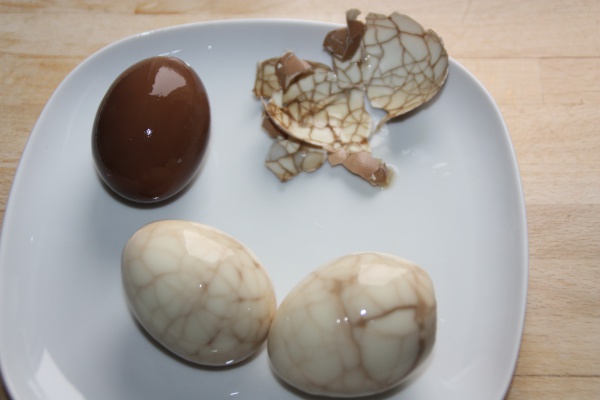Facts About Tea egg
Tea eggs, also known as marble eggs, are a beloved Chinese snack that is not only flavorful but also visually striking. These savory treats are prepared by boiling eggs, gently cracking their shells, and then simmering them in a mixture of tea, soy sauce, and various spices. The result is an egg adorned with beautiful, marbled patterns, making them as delightful to the eyes as they are to the taste buds.
Tea eggs are a common sight at street vendors in Chinese communities worldwide and are also a staple in many Asian restaurants. They originated in China's Zhejiang province, where they were initially created as a method for preserving eggs. Today, however, they are enjoyed throughout China and beyond.
The traditional preparation of tea eggs involves several steps: begin by boiling the eggs, then gently crack their shells to create a web of fissures. Next, simmer the eggs in a spiced tea mixture and allow them to steep for several hours to absorb the flavors. If you are short on time, there is a quicker method: fully cook the eggs, peel off the shells, and let them steep in the spiced tea mixture for a shorter period. The final product should feature eggs with a mix of light and dark brown patterns on the exterior and a flavorful yellow yolk inside. The precise taste can vary depending on the type of tea and spices used.
Tea eggs have found their way into the hearts and kitchens of many regions. In mainland China, they are a common household treat and a popular street food. In Taiwan, they are a hot item in convenience stores, with millions sold each year. In Indonesia, a similar dish called telur pindang derives its unique coloring from ingredients like shallot skins or teak leaves. In Malaysia, telur pindang is a special dish often served at weddings and celebrations, and commercial suppliers now offer it nationwide.

 Tajikistan
Tajikistan